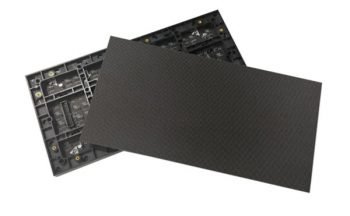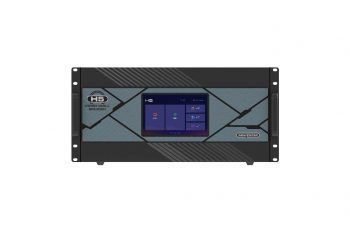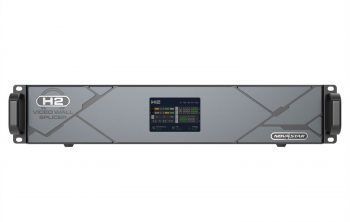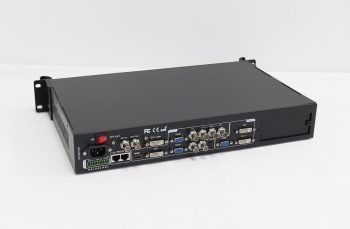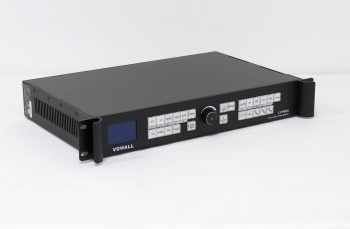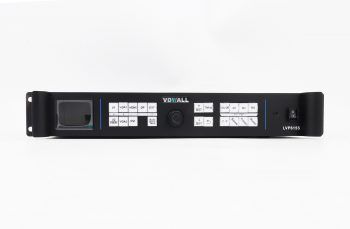As we all know, LED electronic large screen is packaged by thousands of lamp beads, but the junction temperature of LED lamp is not clear to most people except professionals in LED industry. The following is a brief introduction to the five junction temperature causes and solutions of LED electronic large screen lamp beads by the mini photoelectric LED display manufacturers.
The basic structure of LED is a semiconductor p-n junction. When the current passes through the LED element, the temperature of p-n junction will rise. At this time, we define the temperature of p-n junction area as the LED junction temperature. Because the chip size of the component is very small, it can also be said that the temperature of the LED chip is the junction temperature.
1. It has been proved that the limitation of light output efficiency is the main reason for the rise of LED junction temperature. Although advanced material growth and component manufacturing technology can convert most of the input electric energy of led into light radiation energy, due to the much larger refractive index of LED chip materials and surrounding media, a large part of photons (> 90%) generated in the chip can not smoothly overflow the interface. After the chip and the dielectric interface produce total reflection, they return to the chip and pass through the interface for many times Finally, the reflection part absorbs the chip material or substrate and changes into heat in the form of lattice vibration, which makes the junction temperature rise.
2. Because the p-n junction itself is defective, the injection efficiency of the device will not reach 100%, that is to say, in addition to the charge (hole) injected into the N region by the p region, the N region will also inject the charge (electron) into the p region when the LED works. In general, the latter kind of charge injection does not produce photoelectric effect, but is consumed in the form of heating. Even if the useful part of the injected charge does not turn into light, some of it will combine with the impurities or defects in the junction region and eventually turn into heat.
3. The poor electrode structure, the material of the window layer substrate or junction area and the conductive silver glue all have a certain resistance value. These resistances are added to each other to form the series resistance of LED components. When the current flows through the p-n junction, it will also flow through these resistors, resulting in Joule heat, resulting in the increase of chip temperature or junction temperature.
4. Obviously, the heat dissipation ability of LED is another key factor to determine the junction temperature. If the heat dissipation capacity is strong, the junction temperature will decrease. On the contrary, if the heat dissipation capacity is strong, the junction temperature will increase. Because epoxy adhesive is a low thermal conductivity material, the heat generated at p-n junction is difficult to radiate upward to the environment through transparent epoxy. Most of the heat radiates downward through the substrate, silver paste, shell, epoxy adhesive layer, PCB and heat sink. Obviously, the thermal conductivity of related materials will directly affect the heat loss efficiency of the components.
5. For a common LED, the total thermal resistance from p-n junction to ambient temperature is between 300 ℃ and 600 ℃ / W. for a power LED with good structure, the total thermal resistance is about 15 ℃ to 30 ℃ / W. the huge difference of thermal resistance indicates that the common LED can work normally only under the condition of very small input power, and the dissipation power of power LED can be as high as watt level or even higher.
So how to solve the LED electronic large screen lamp bead junction temperature? It can be solved by the following methods.
1. Reduce the thermal resistance of LED itself;
2. Good secondary cooling mechanism;
3. Reduce the thermal resistance between the LED and the installation interface of the secondary cooling mechanism;
4. Control the rated input power;
5. Reduce the ambient temperature
In a word, the input power of LED is the only source of the thermal effect of the component. Part of the energy turns into radiant light energy, and the rest of the energy turns into heat, thus raising the temperature of the component. Obviously, the main way to reduce the temperature rise effect of LED is to try to improve the electro-optic conversion efficiency (also known as external quantum efficiency) of the device, so that as much input power as possible can be converted into light energy, and the other important way is to try to improve the thermal dissipation ability of the device, so that the heat generated by the junction temperature can be emitted to the surrounding environment through various ways.
One stop solution for LED video wall controllers and accessories, from led video processor ,sender cards, receiving cards to power supply and led modules.
- Address: floor 2, SKW industrial park, Shitan town, Shenzhen city,China
- Phone: +(86) 13714518751
- Email: [email protected]
Help & Support
Subscribe
Subscribe to our latest led display screen tech Newsletter and get bonuses for the next purchase

